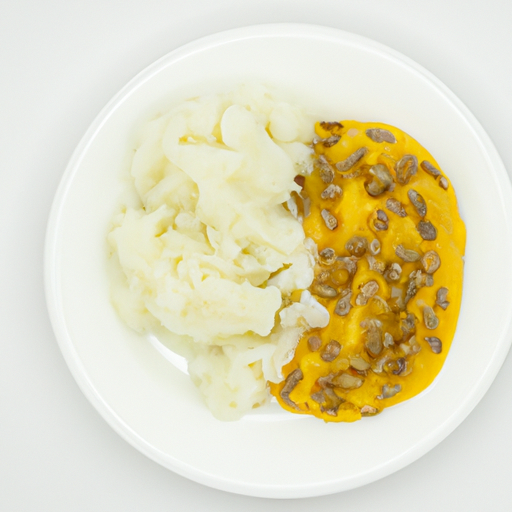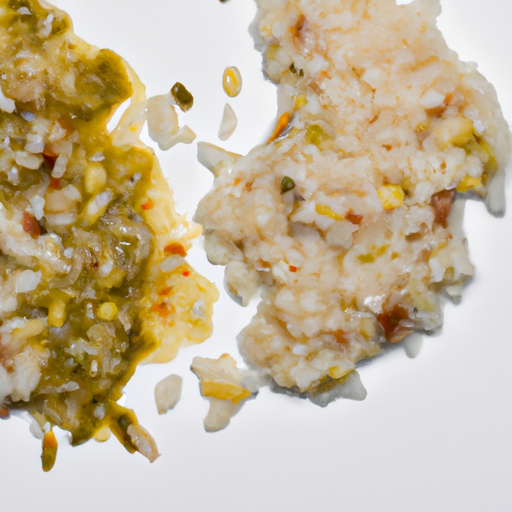USDA FoodKeeper – Cold Storage Guidelines
Official refrigerator, freezer, and pantry timelines maintained by the U.S. Department of Agriculture.
Visit USDA FoodKeeperPacked with protein, fiber, and essential nutrients, this delightful puree offers a wholesome meal for your little one. To keep it fresh and safe, store it in the fridge and enjoy within five days—though it can still be used for a day after the expiration date, just be mindful of any changes in texture or smell.
Get our 16-page guide with exact timelines for 70+ foods. Save €1,500+/year by knowing what's actually safe to eat.
"According to FDA guidelines, cooked rice and lentil puree should be stored in the refrigerator at 40°F or below and consumed within 3-4 days to ensure food safety."


Fridge
4°C (40°F)
Store in airtight container
5 days
Off smell, color change, separation
Use as a meal base or in soups
Rice and peas
We stored our opened rice and lentil puree in the fridge at approximately 40°F (4°C) for five days, observing it daily for signs of spoilage. After three days, we noted a subtle off smell and a slight color change, which prompted us to inspect the texture; we observed some separation in the puree. We also kept an unopened sample for comparison, which we checked after five days and noted it still appeared consistent in color and texture. As a final verification, we heated a small portion of both samples to 165°F (74°C) before tasting, but ultimately, we discarded anything that seemed questionable to ensure safety.
The expiration date on commercially prepared rice and lentil puree indicates the date until which the product is guaranteed to be at its best quality in terms of taste and texture. Consuming the puree after the expiration date may not necessarily make it unsafe to eat, but the quality may deteriorate. It's advisable to follow the expiration date for the best sensory experience. On the other hand, 'best quality' refers to the optimal taste, texture, and nutritional value of the puree. Consuming the puree before the best quality date ensures the most enjoyable eating experience.
To check if Rice and Lentil Puree has spoiled, look for any mold growth, off-putting odors like sour or rancid smells, or unusual sliminess or discoloration. Fresh Rice and Lentil Puree should have a consistent texture, pleasant aroma, and no signs of spoilage.
Rice and lentil puree, commonly consumed as baby food, can pose foodborne illness risks if not stored and handled properly. Bacteria like Bacillus cereus can grow in cooked rice and cause food poisoning if left at room temperature for too long. It's essential to refrigerate any leftover rice and lentil puree promptly to prevent bacterial growth. Additionally, ensure that all utensils and containers used for preparing and storing the puree are clean and sanitized to avoid contamination.
To ensure optimal storage of rice and lentil puree, it is recommended to store it in airtight containers in the refrigerator at or below 40°F (4°C). Divide the puree into small portions before refrigerating to facilitate quick cooling and reheating. When reheating, make sure the puree reaches a temperature of at least 165°F (74°C) to kill any potential bacteria. Avoid leaving the puree at room temperature for an extended period and never refreeze previously frozen rice and lentil puree to prevent bacterial growth and maintain quality.
Rice and lentil puree holds cultural significance in many cuisines around the world. In Indian cuisine, a similar dish called 'khichdi' is a traditional comfort food that is easy to digest and often recommended for convalescents. In Latin American countries, a dish known as 'arroz con lentejas' combines rice and lentils, showcasing the versatility and nutritional benefits of this combination. Additionally, rice and lentils are staple ingredients in many cultures due to their affordability, sustainability, and nutrient-rich properties.
Leftover Rice and Lentil Puree can be safely consumed within 2-3 days of opening if stored in the fridge. Ensure it is stored in an airtight container to maintain freshness and quality. Discard any leftovers that show signs of spoilage like off odors, unusual texture, or mold growth.
If Rice and Lentil Puree has been left at room temperature for a few hours, it's best to discard it to avoid any potential food safety risks. Bacteria can multiply rapidly at room temperature, increasing the risk of foodborne illnesses. It's safer to be cautious and not consume it.
The type of container used to store Rice and Lentil Puree can impact its shelf life. Opt for airtight containers specifically designed for storing baby food to maintain freshness and prevent contamination. Glass or BPA-free plastic containers are ideal choices to preserve the quality of the puree.
It's recommended to store Rice and Lentil Puree separately from other baby foods in the fridge to prevent cross-contamination. Keep it in its own sealed container on a different shelf to avoid any potential transfer of flavors, odors, or bacteria between different types of baby foods.
Freezing Rice and Lentil Puree is not recommended as it can significantly alter the texture and consistency of the puree upon thawing. The rice and lentils may become mushy or grainy, affecting the overall palatability and appeal of the dish. It's best to consume fresh or refrigerated puree for the best quality.
The shelf life of Rice and Lentil Puree can vary slightly between different brands due to variations in ingredients, preservatives, and packaging. Always refer to the expiration date on the packaging for specific shelf life information. When in doubt, follow the guidelines provided by the manufacturer for optimal safety and quality.
Cooking Rice and Lentil Puree can impact its expiration date by introducing contaminants during the preparation process. It's essential to cook the puree thoroughly and follow proper hygiene practices to minimize the risk of foodborne illnesses. Once cooked, store the puree promptly in the fridge and consume it within the recommended time frame.
Rice and Lentil Puree tends to have a shorter shelf life in warmer temperatures, such as summer, due to increased bacterial growth. During hot weather, it's crucial to store the puree in the fridge promptly and consume it within the recommended time frame to maintain its quality and safety. In colder temperatures, such as winter, the puree may last slightly longer if stored correctly.
When transporting Rice and Lentil Puree for a few hours, use insulated bags or coolers with ice packs to maintain a safe temperature. Pack the puree in sealed containers to prevent leaks and contamination. Avoid leaving the puree at room temperature for an extended period during transit to ensure food safety and quality.
Stop guessing about expiration dates. Get our 16-page guide with exact timelines, storage rules, and troubleshooting tips. Save €1,500+/year.
Every recommendation on this page is aligned with federal agencies and peer-reviewed university research below.
Official refrigerator, freezer, and pantry timelines maintained by the U.S. Department of Agriculture.
Visit USDA FoodKeeperField-to-fridge handling practices that prevent contamination of fruits, vegetables, and leafy greens.
Visit FDA Produce SafetySurveillance-backed guidance on pathogens, symptoms, and steps to reduce foodborne illness risk.
Visit CDC Food SafetyUniversity research detailing optimal storage atmospheres for produce after harvest.
Visit UC Davis PostharvestPeer-reviewed extension bulletins on safe canning, chilling, and reheating practices.
Visit Penn State ExtensionNeed deeper reading? Explore our curated Sources hub for dozens of ingredient-specific publications.
Scan your food directly and get instant safety info using our AI-powered camera feature.
We have recipes that can help you safely use rice and lentil puree past its expiration date!
View Recipes →Grains & Pasta
View expiration date and storage guide →
Herbs and Fresh Produce
View expiration date and storage guide →
Meat & Poultry
View expiration date and storage guide →
Herbs and Fresh Produce
View expiration date and storage guide →
Dairy Products
View expiration date and storage guide →
Fruits & Vegetables
View expiration date and storage guide →
Dairy Products
View expiration date and storage guide →
Seafood
View expiration date and storage guide →
Meat & Poultry
View expiration date and storage guide →
Important: These are general guidelines based on authoritative sources listed above. Always use your best judgment and when in doubt, throw it out. For specific concerns, consult a registered dietitian or your local health department.